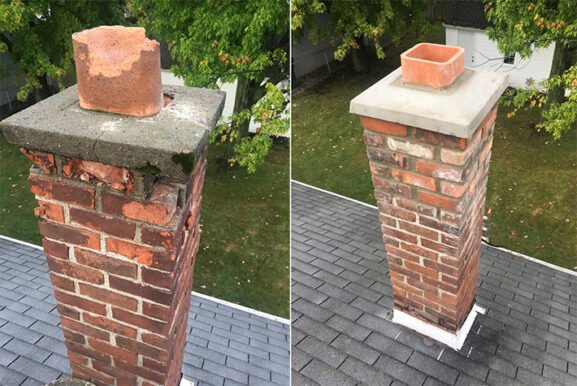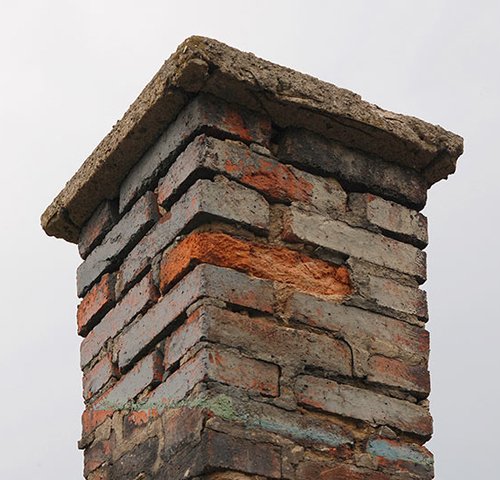What Homeowners Should Know About Chimney Repair Costs in 2025
Key Takeaways
- Chimney repair costs vary widely depending on the type of damage, materials, and location.
- Neglected chimney issues often lead to higher repair bills down the road.
- Certain types of repairs like crown rebuilds or liner replacements tend to be more expensive.
- Regular maintenance and early detection are key to avoiding major costs.
Understanding What Impacts Chimney Repair Costs
When it comes to chimney repair costs, there’s no one-size-fits-all number. A minor repair like fixing a cracked flue tile can cost a few hundred dollars, while a complete rebuild or liner replacement can easily reach several thousand. The condition of the chimney, the age of the structure, and even where you live all play major roles in determining the total cost.
Labor rates also vary from one region to another. For example, in high-demand markets like New York and New Jersey, homeowners may pay a premium compared to more rural areas. Additionally, accessibility issues—like a steep roof pitch or tall chimney—can increase labor time and safety precautions, which raises the overall price.
Common Repairs and Their Estimated Costs
Knowing the ballpark figures for common chimney repairs can help you budget more effectively. Below are some typical services and what they often cost in 2025:
Chimney Cap Installation
A chimney cap helps keep rain, debris, and animals out. Installing or replacing a cap usually runs between $150 and $500, depending on the material and size.
Tuckpointing and Mortar Joint Repair
Cracked or deteriorating mortar needs attention before water damage sets in. Tuckpointing can cost $500 to $2,500, largely influenced by the extent of the damage and height of the chimney.
Chimney Crown Repair or Rebuilding
The crown protects the top of the chimney from water intrusion. Small cracks may be sealed for $150 to $400, while a full crown rebuild may cost $800 to $2,000 or more.
Chimney Liner Replacement
Replacing a damaged chimney liner is one of the costlier repairs. Stainless steel liners often range from $2,000 to $5,000, while clay liners may require full restoration if significantly damaged.
Chimney Flashing Repair
Flashing around the base of the chimney prevents leaks. Repairing or replacing flashing usually falls between $300 and $1,200, depending on roof type and chimney structure.
For a more comprehensive understanding of these cost ranges, the National Association of Realtors provides insights on home maintenance and repair standards.
Why Timing and Maintenance Matter
Putting off small chimney repairs can lead to much larger—and more expensive—problems later. Water intrusion from damaged flashing or a cracked crown can compromise the brickwork or even cause mold inside your home. These aren’t just cosmetic issues; they affect the structural safety of your chimney and surrounding areas.
The freeze-thaw cycle is another major concern, especially in colder climates. When water enters cracks and freezes, it expands, worsening the damage. Acting quickly not only saves money but also extends the life of your chimney system.
Routine inspections, ideally once a year, can catch issues before they turn into costly repairs. Certified chimney professionals often use specialized cameras to inspect liners and flues, identifying problems that aren’t visible from the outside.
Material Choices That Influence the Price
The materials used for repair also affect overall cost. For example, stainless steel liners are more durable and long-lasting but also more expensive than aluminum or clay. Similarly, high-grade mortar or waterproofing sealants may come with a higher upfront price but reduce the likelihood of future issues.
Choosing the right materials often requires a balance between durability and budget. While it may be tempting to cut corners, using lower-grade materials can lead to frequent repairs and higher long-term costs.
Regional Cost Differences and Permitting Factors
Your location plays a bigger role than most homeowners realize. Urban areas with higher labor rates and strict building codes will often come with steeper costs. In places like New York City or Northern New Jersey, permits may be required even for relatively simple repairs, adding administrative costs and potential delays.
Moreover, some municipalities require inspections before and after the work is completed. These inspections, while beneficial, may also come with additional fees.
Signs That You Might Need Chimney Repairs Soon
Spotting the early warning signs of chimney issues can prevent more costly fixes down the road. Here are some common indicators:
- White staining (efflorescence) on bricks
- Crumbling mortar or visible cracks
- Rusted or missing chimney cap
- Smoke entering the home
- A noticeable draft change
If you notice any of these issues, it’s wise to call in a professional for an inspection. Many companies offer video inspections and moisture tests to assess the health of your chimney.
How to Budget Wisely for Chimney Work
Because chimney repair costs can range so widely, it helps to think in terms of both routine maintenance and unexpected repairs. Setting aside an annual home maintenance budget can prepare you for routine upkeep like inspections and minor tuckpointing. If your home is older or hasn’t had a chimney check-up in years, consider setting a higher reserve for potential major repairs.
Getting multiple quotes is a smart strategy, but be cautious of offers that seem too cheap. Always check for certification from reputable organizations like the Chimney Safety Institute of America (CSIA) to ensure quality and safety.
Investing in Prevention to Reduce Long-Term Costs
Preventive measures are often overlooked but can be the smartest investment. Waterproofing the masonry, installing a quality chimney cap, and maintaining the flashing can all go a long way in reducing future expenses. These steps are far less costly than repairing severe water damage or dealing with a chimney collapse.
Homeowners should also consider scheduling inspections in the off-season when chimney services are less in demand. This can sometimes result in lower prices and quicker scheduling availability.
Final Thoughts on Managing Your Chimney Repair Expenses
Understanding what affects chimney repair costs puts you in a better position to manage them. With regular maintenance, smart material choices, and early intervention, you can prevent small issues from growing into expensive repairs. Always work with certified professionals and stay proactive about scheduling inspections. A well-maintained chimney not only improves home safety but also adds long-term value.

